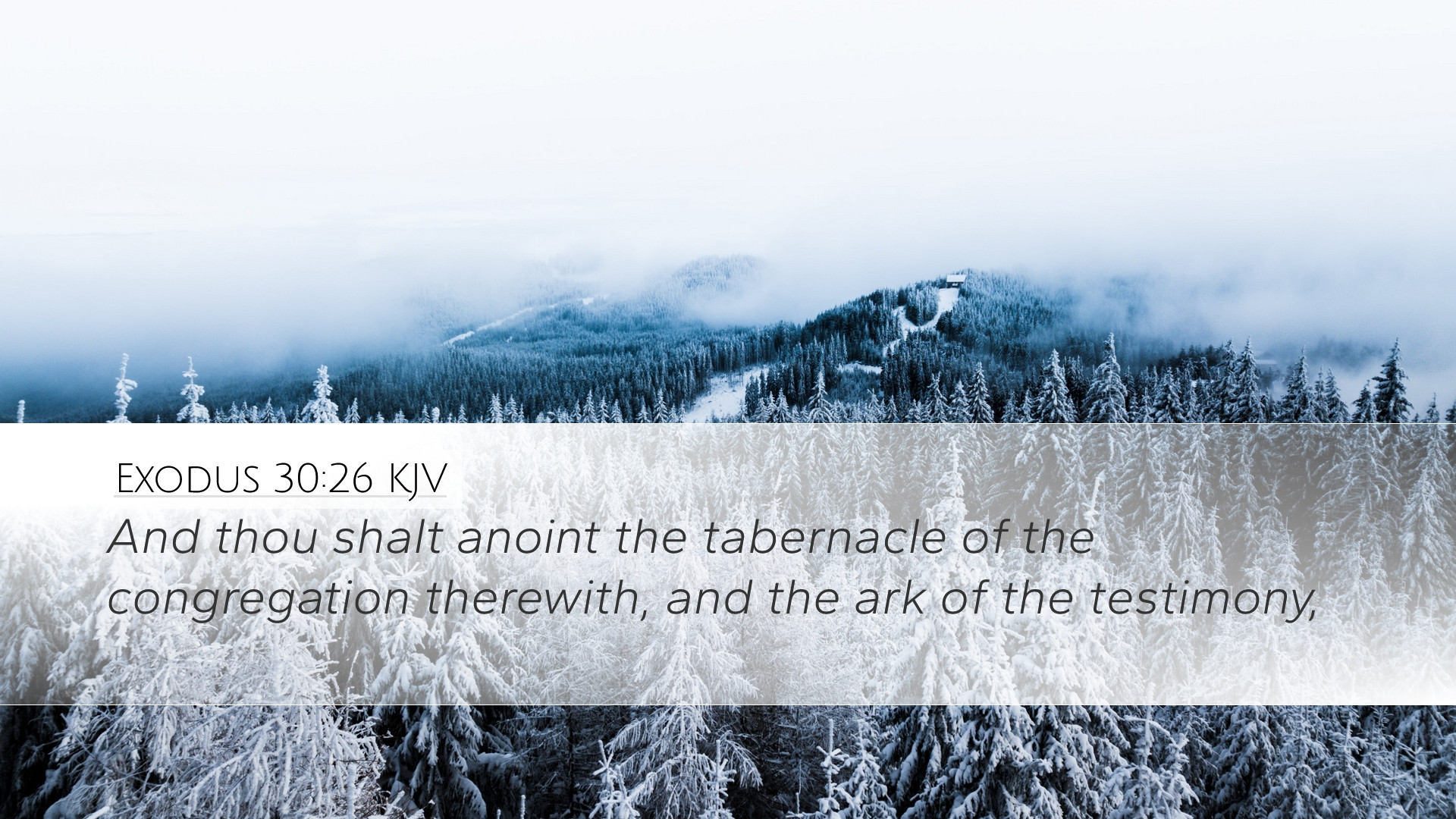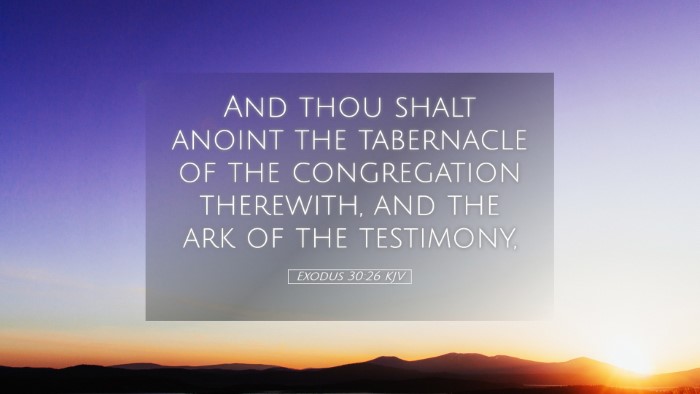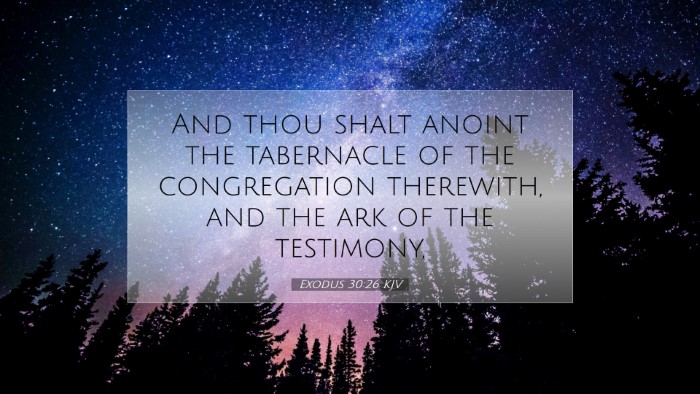Commentary on Exodus 30:26
Bible Verse: Exodus 30:26 - "And thou shalt anoint the tabernacle of the congregation therewith, and the ark of the testimony."
Introduction
This verse is nestled within the instructions given by God to Moses regarding the sacred anointing oil and its application in the consecration of the tabernacle and its furnishings. The significance of anointing in the Old Testament represents a divine selection and empowerment for holy purposes. The commentaries from Matthew Henry, Albert Barnes, and Adam Clarke provide rich insight into this essential act of sanctification.
Theological Significance of Anointing
The act of anointing in the biblical context symbolizes several core theological concepts:
- Divine Presence: Anointing signifies the presence of God, illustrating that the tabernacle is set apart for His dwelling.
- Separation for Holy Use: The items in the tabernacle, especially the ark of the testimony, are consecrated for the worship and service of God, indicating the sacredness of worship.
- Empowerment of the Holy Spirit: The oil represents the work of the Holy Spirit, thus foreshadowing the ultimate anointing found in Christ, the Messiah.
Examination of Textual Commentary
Matthew Henry's Commentary
Matthew Henry elaborates on the necessity of anointing the tabernacle and the ark, asserting that it emphasizes the importance of holiness and the need for divine empowerment in worship. He notes that this act distinguishes the earthly sanctuary from common places, dedicated exclusively to God. Henry also points out that the oil's formulation not only involves physical elements but also spiritual significance, as it involves the work of the Holy Spirit.
Albert Barnes' Insights
Albert Barnes connects this act of anointing to the overarching theme of God’s presence with His people. He explains that the tabernacle served as a portable dwelling for God amidst the Israelites during their journey. It expressed the idea of God's accessibility to His people. Anointing the ark, which contains the testimony of God’s covenant with Israel, symbolizes the indelible bond between God and His chosen people. Furthermore, Barnes emphasizes the careful ingredients used in the anointing oil, symbolizing the purity and holiness that should characterize those chosen for ministry.
Adam Clarke's Perspective
Adam Clarke provides a detailed interpretation of the physical aspects of the anointing oil, such as its composition and the implications of its use. He states that each element was significant, offering a representation of various attributes of Christ. Clarke goes further to address the historical context, explaining that the sanctification of the tabernacle reflects God’s desire for a relationship with humanity through the mediative role of the priesthood. His commentary elucidates the necessity of careful adherence to God’s instructions, which brings honor to His name and sets a model for present-day worship practices.
Practical Implications for Modern Believers
Understanding the anointing in this context invites contemporary believers into a deeper relationship with God. Here are some implications that arise from these insights:
- Holiness in Worship: As the tabernacle and its furnishings were set apart, so too must our places of worship and our worship practices be approached with reverence and dedication.
- Awareness of God’s Presence: Just as the tabernacle was a physical space for God’s presence, believers today are called to embody the presence of Christ through the Holy Spirit, living lives that reflect His glory.
- Christ as Our Anointed One: Recognizing Jesus as the ultimate fulfillment of the anointing foreshadowed in the Old Testament brings clarity to His role as our Savior and High Priest.
Conclusion
Exodus 30:26 serves as a crucial reminder of God’s desire for sanctification and the importance of setting apart spaces for His presence. The insights drawn from Matthew Henry, Albert Barnes, and Adam Clarke enrich our understanding of this passage, providing theological depth and practical applications for today’s believers. As we explore the dimensions of anointing, we realize it isn’t merely a historical act but a continuous invitation to embrace God's holiness and presence in our lives and ministries.


